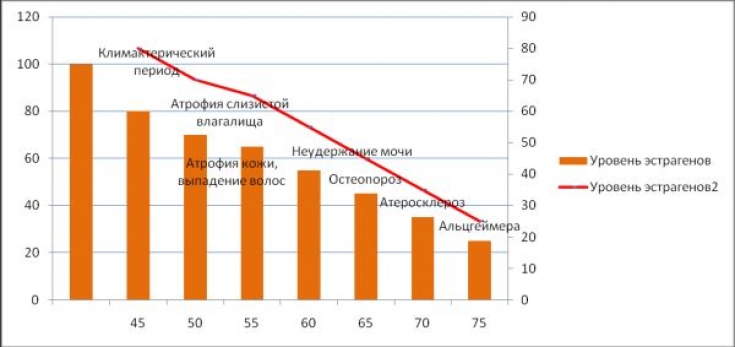According to international statistics, the average age of onset of menopause ranges from 45 to 55 years. Early menopause is defined as the decline in ovarian function before the age of 40. During this period, the synthesis of estrogen stops, which causes the clinical picture characteristic of the climacteric syndrome.
Therefore, any damage to the ovaries and inflammatory diseases of the female reproductive system can cause the development of early menopause. How to prevent premature ovarian failure, as well as what the early onset of menopause is fraught with, read on estet-portal.com in this article.
The main causes of early menopause
The most common causes of early menopause are:
• Genetics. If the doctor cannot find an obvious cause of menopause, then it is most likely genetic;
• Bad habits. Smoking is known to have an antiestrogenic effect, so women who smoke go through menopause one to two years earlier;
• Insufficient body weight. The largest stores of estrogen are found in adipose tissue, so underweight women are more likely to experience early menopause;
• Autoimmune diseases. Premature fading of ovarian function may indicate the presence of a more serious pathology – autoimmune diseases;
• Epilepsy. Women with this disease are more likely to experience premature ovarian failure.
Early ovarian failure is not a critical condition, however, it requires mandatory treatment.
Premature ovarian failure is dangerous for the development of osteoporosis, cardiovascular disease, obesity and diabetes.
Menopause is defined as the absence of menses for more than 12 months. You can confirm menopause by measuring the level of estrogen and follicle-stimulating hormone in the blood.
• hormone replacement therapy for early menopause;• features of symptomatic treatment of early menopause;
• early menopause: features of the use of physiotherapy.
Hormone replacement therapy for early menopause
Hormone therapy for premature menopause can relieve many of the symptoms associated with it. There are two main types of hormone replacement therapy: estrogen monotherapy and combination therapy with
estrogenand a progestogen. Monotherapy is only used if the woman has had a hysterectomy, which is associated with a high risk of uterine cancer. Hormone therapy is extremely effective in relieving menopausal symptoms, especially hot flashes and night sweats. Side effects of replacement therapy include breast tenderness, headache, and metrorrhagia.

The problem of decreased libido for women with early menopause is especially relevant. Most often, hormone replacement therapy is sufficient to increase sexual desire, however, if it is ineffective, additional testosterone may be recommended.
Also, women are often worried about dryness and discomfort in the vaginal area. To eliminate discomfort in the intimate area, hormonal preparations for topical use, or moisturizing suppositories and lubricants are used. To combat
osteoporosis, regular exercise and foods high in calcium and phosphorus are recommended. Early menopause: features of the use of physiotherapy
The first clinical manifestations of early menopause are astheno-vegetative disorders. In this regard, such physiotherapeutic methods as galvanization and the use of pulsed currents in the form of electroanalgesia are the most effective.
Central electroanalgesia can reduce the clinical manifestations of menopause by normalizing the work of the autonomic nervous system.
Also, radon baths have a positive effect on early menopause, which help to normalize blood circulation, reduce hot flashes, sweating and headaches.






